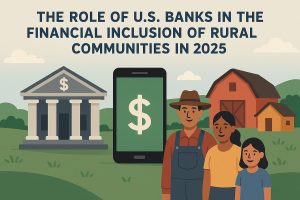In recent years, the Credit Card has evolved from a simple payment tool into a true symbol of financial identity. In a world driven by innovation and the pursuit of exclusivity, subscription-based cards have emerged as a direct response to consumers’ desire for personalized experiences. More than rewards, points, or miles, today’s customers value access, prestige, and convenience. The success of this model reflects a cultural shift — spending is no longer just a transaction but an act of self-expression and belonging.
While traditional financial institutions focus on fees and limits, subscription cards are building a new narrative centered around relationships. Banks and fintechs have realized that offering tangible, personalized benefits creates a deeper emotional connection with their customers. By paying a monthly or annual fee, users gain advantages that enhance their daily lives — from travel perks to entertainment — and feel that they are receiving more than a product: they’re engaging in a continuous-value experience.
The new definition of exclusivity

Subscription cards are redefining what it means to have a premium Credit Card. Exclusivity used to mean access to lounges and points programs, but today it extends much further — encompassing wellness, culture, technology, and convenience. Modern consumers want to feel that every perk is designed for their lifestyle. That sense of belonging drives long-term loyalty, as the customer begins to see the card not just as a financial tool, but as a lifestyle companion.
This new sense of exclusivity is also more accessible. Financial institutions have learned that there’s room for multiple membership tiers — from entry-level benefits to ultra-premium experiences. This segmentation broadens the product’s appeal and democratizes the idea of prestige, making the Credit Card a flexible platform that adapts to each user’s profile.
Personalization as the new standard
The core strength of subscription cards lies in personalization. Through data analytics and intelligent algorithms, companies identify customer behavior and tailor offers accordingly. Frequent travelers may earn double miles, while online shoppers may receive enhanced cashback or extended purchase protection. This data-driven model puts the client at the center of the experience.
A standout example is American Express, a global leader in personalized benefits. By blending technology, exclusivity, and service, the brand has turned the Credit Card into a lifestyle statement. Its success inspires others to innovate similarly, proving that the future of finance depends on empathy as much as it does on analytics.
The challenges of the subscription model
Despite its appeal, the subscription model faces significant challenges. Maintaining perceived value is crucial — customers must feel that the fee they pay translates into consistent benefits. This requires continuous innovation, clear communication, and constant adaptation. If users stop perceiving value, cancellations rise. Trust is the key asset of a subscription card; once lost, it’s hard to regain.
Balancing cost and profitability is another challenge. Offering unique experiences can be expensive, and not all companies can sustain this long-term. Success depends on deep consumer insight and the ability to deliver value without eroding margins.
The future of personalized credit cards
The future of the Credit Card is inseparable from technology. With artificial intelligence, cards will soon predict consumer needs and adjust benefits in real time. This evolution will make financial relationships more human and dynamic, turning credit cards into digital companions that understand users’ lifestyles. In a world where experiences matter more than rewards, the Credit Card of tomorrow will be a reflection of who the consumer truly is.






